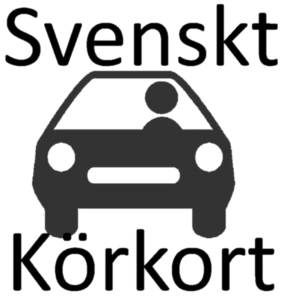Understanding the Driving License: A Comprehensive Guide
A driving license is a crucial document for individuals who want to run an automobile lawfully. This guide intends to provide a thorough understanding of the driving license, including its types, requirements, application processes, and the significance it holds in today's fast-paced society.
What is a Driving License?
A driving license is a government-issued document that licenses an individual to drive an automobile on public roads. This license is vital not only for adherence to the law however also as a step of competency to guarantee that motorists possess the necessary abilities to run a vehicle safely.
Types of Driving Licenses
Driving licenses differ by jurisdiction, and they can be categorized into a number of types. Here's a breakdown:
| License Type | Description |
|---|---|
| Student's Permit | A provisional license enabling new drivers to practice under specific conditions. |
| Complete License | A basic chauffeur's license permitting the holder to operate most kinds of automobiles without limitations. |
| Industrial License | Necessary for individuals wanting to operate business trucks or buses. |
| Motorcycle License | Specifically designated for operating motorcycles and motorbikes. |
| International Permit | Permits people to drive in foreign nations, offered they have a legitimate national license. |
Why is a Driving License Important?
Holding a valid driving license has a number of benefits:
- Legal Requirement: It is a legal necessity to drive on public roadways.
- Security Assurance: A driving license ensures that the motorist has undergone essential training and examinations to run an automobile securely.
- Identification: It acts as a main type of recognition, frequently needed for different services.
- Insurance Compliance: Many car insurer need valid driving licenses as one of the conditions for providing a policy.
- Work Opportunities: Certain jobs require employees to have a valid driving license, particularly those including transport.
How to Obtain a Driving License
The procedure of obtaining a driving license normally includes numerous actions, which can vary by region. Below is a basic summary of the steps to follow:
- Eligibility Check: Most jurisdictions have age and residency requirements.
- Composed Test: Applicants typically must pass a written exam covering the rules of the road.
- Vision Test: A vision assessment might be needed to guarantee the applicant can see well sufficient to drive securely.
- Practical Driving Test: New chauffeurs need to show their driving skills in a useful test.
- Application Submission: Complete the necessary kinds and submit the essential paperwork, consisting of proof of identity and residency.
- Payment of Fees: Pay any associated costs for the application process.
- Waiting Period: Some regions have a probationary duration during which a learner's authorization should be held before a complete license is issued.
Typical Requirements for Application
- Evidence of identity (e.g., birth certificate, passport)
- Social Security number or comparable recognition
- Evidence of residency (e.g., utility costs, rental arrangements)
- Completion of a chauffeur's education course (if relevant)
Tables: A Comparative Look at Driving License Categories
The following table highlights differences in requirements and functions of different kinds of driving licenses:
| Type of License | Age Requirement | Evaluating Requirements | Limitations |
|---|---|---|---|
| Learner's Permit | Varies, typically 15-16 | Written, vision | Needs a licensed adult in the automobile |
| Full License | Usually 18+ | Written, vision, useful | None (unless specific recommendations apply) |
| Commercial License | Generally 18+ | Written, vision, useful, additional tests | Limited to industrial lorries just |
| Bike License | Varies, normally 16 | Written, vision, useful | Normally limited to motorcycles only |
| International Permit | 18+ | Valid nationwide license needed | Legitimate in nations that acknowledge it |
Frequently Asked Questions About Driving Licenses
1. How long does it take to get a driving license?
The timeline varies by area and private circumstances, but an uncomplicated process that consists of taking a course and finishing tests may take numerous weeks to a few months.
2. What should I do if I lose my driving license?
In case of loss, report the event to regional authorities and look for a replacement through the relevant motor vehicle department.
3. Can I utilize an international driving permit in my home nation?
Many countries require a legitimate nationwide license, and an international driving license is intended for use abroad. Constantly inspect regional laws.
4. Exist specific laws for motorists under 18?
Yes, many places have actually graduated licensing laws that impose limitations on more youthful drivers, such as traveler limitations and nighttime curfews.
5. What takes place if I get captured driving without a license?
Driving without a valid license can cause fines, vehicle impoundment, and even legal charges, depending on local laws.
In conclusion, acquiring a driving license is a considerable turning point for many people. Köp Snabbt Körkort requires a structured process developed to guarantee security and legality on the roads. Understanding the types, significance, and application procedures can empower prospective motorists to navigate their licensing journey with self-confidence. Whether for individual usage or expert purposes, a driving license is an important asset in the contemporary world.

